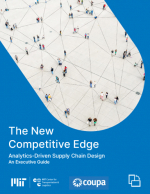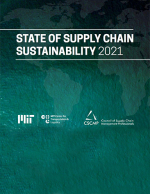Future of Retailing
Consumers are seeking more personalized, convenient, and fresh products, which is pushing companies toward consumer-centric rather than product-centric strategies.
On November 14-15, 2018, the MIT Center for Transportation and Logistics (CTL) convened a group of participants from
industry and academia to discuss the future of retailing.
Food, clothing, footwear, and furniture retailers were joined by manufacturers, freight carriers, urban solution providers, and financiers to discuss the future of brick-and-mortar retail, e-commerce, and omnichannel. Representatives came from the U.S., Latin America, and China.
The day and a half roundtable covered six inter-related topics: a) retail operations and supply chains; b) diversification
and competition in the retail footprint; c) coupling dynamic consumer behaviors and evolving retail supply chains; d)
transportation and delivery strategies in retail; e) digital transformation and collaboration in retail; and f ) e-commerce and
omnichannel strategies in retail supply chains.
A select of industry participants introduced each topic by presenting their company’s views, strategies and challenges, followed by a wide-ranging group discussion. Polls and word-cloud surveys uncovered participants’ top challenges & issues.
Overall, consumers are seeking more personalized, convenient, and fresh products, which is pushing companies toward
consumer-centric rather than product-centric strategies. At the same time, retailers, product makers, and carriers are
seeking viable business models attuned to these emerging consumption patterns.
Retailers are looking at repurposing store floor space either to provide new experiences or to support online channels. These strategies look for curating the assortment of products by channel, saving time and growing the value proposition to consumers.
Retailers discussed the merits of a range of fulfillment approaches: in-store aisles, in-store back rooms, micro-fulfillment
centers, dark stores, and efficient automated fulfillment centers. Home delivery can be done by dedicated delivery fleets,
technology-based economy services, or third-party delivery firms.
The cost-to-serve the last mile was a major profitability hurdle motivating most companies to pursue click-and-collect strategies at stores. As attractive as the idea of a physical Internet and collaboration was for cutting costs in fulfillment and the last mile, many companies feared loss of branding in merging and sharing pools of warehousing, fulfillment, and transportation assets. Omnichannel brings the added challenge of creating a seamless customer experience on the front-end from two very different back-end systems that can have different packaging, distribution, inventory management, and transportation approaches.
Digital product design and digital front-ends promise to accelerate supply chains to become more responsive to consumer
trends. However, digital transformation requires getting digital talent and changing the broader organization to be more
data centric. Advanced technologies such as augmented reality, virtual reality, and urban air mobility might provide
additional solutions.
Overall, no single solution works for every country, every consumer, or even every time a consumer orders some goods.
The confluence of consumers’ diverse preferences, economic realities is pushing companies to use many different tactics.
Many companies were experimenting with many approaches, trying to fail faster to succeed sooner.
Yet, regardless of how retailers respond to dynamic consumer trends, the supply chain function takes a lead role in implementing these consumer-centric strategies. Therefore, a prime step is to understand consumer features and purchasing trends, and to link
them to logistics activities in multiple levels for various supply chain stakeholders in the retail industry.
What’s Related




Favorites





